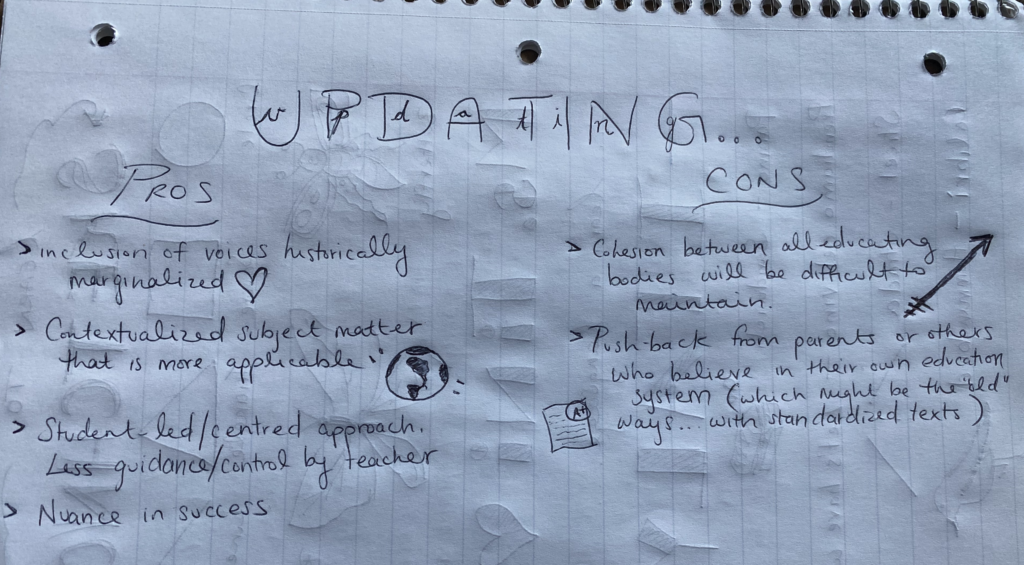Do we need to re-imagine education?
The answer is yes. And this is an exciting adventure for myself as a new teacher! We must respond to a new generation of youth.

The documentary “Most Likely to Succeed” (2015), offered many topics to discuss with parents, teachers and students on whether we should be updating education and how that could look. Their highlight of High Tech High gave tangible examples for how Westernized schooling could integrate some Indigenous pedagogy (though they did not give credit to ancient practices and knowings). There was an emphasis on student-led projects and activities that were based in real life contexts. These created a sense of intrinsic motivation for the students to solve problems as they knew they could be faced with them at any point. Specifically, the assignment for students to compare ancient civilizations and find the reasons why they fell. It was evident there was some genuine learning that encouraged them to critically analyze what it takes to have a community. This holistic model is what is present in the First People’s Principles of Learning. Developing a standard of care for the world at a younger age is an important aspect of the upgrade.
As someone who is completing my Bachelor of Education with an Indigenous education focus at UVic, I have a bit of a bias. Every class we have taken has offered an alternative approach to learning. Some of those values surround land as pedagogy – our connection to land and place should be a driving force for what we learn as we are at a dire turning point in our environmental health. With poor environmental health, our community and society are at risk in health as well. If we can look to this as a principle in education, we will be updating our curriculum to encourage the youth to care for the betterment of humanity on a global scale. Language revitalization will play a vital role in this as Indigenous languages are directly related to how we relate to place. In BC specifically, we have the most amount of Indigenous languages spoken in all of Canada. This is an untapped well of understanding of our natural phenomena. When the students at High Tech High adapted an old greek play to a piece on Pakistan, it reminded me of how powerful storytelling is. Indigenous languages were largely taken out by the banning of potlatch and ceremony where story exchanges happened. Language revitalization in educational settings will bring in authentic Indigenous identity and it can be a powerful tool for reconciliation.
If we look through the history of education, we can view it as a powerful tool for change. We have seen it create change that is no longer benefitting anyone and caused generational harm on Indigenous people around the world. Finding a way to upgrade our education to be more inclusive while finding solutions for our world moving forward will only become more necessary.
Sorry, but comments are not enabled on this site.